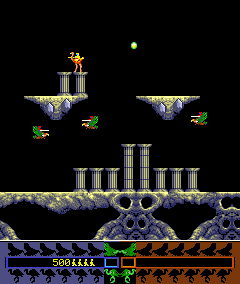Some days when I went to my local arcade with the express intent of playing the sole copy of the Mega Man arcade game that I’ve ever managed to find, I’d only be greeted with a sign saying that it was out of order. In those cases I was pretty well obligated to play the other game in the arcade.
And, yes, I realize that an arcade with two games in it isn’t really much of an arcade, it’s more of a closet with a couple of games in it. But the sign above that closet said ‘arcade’, so that’s the nomenclature I’m going to use.
But, anyway, the other game in the arcade was a little game called Ridge Racer, which was a game that I had heard of before, but never owned any of the systems that the home versions came out on, and had never seen the arcade version of the game in person before or since. Ridge Racer is a racing game, but the hook is that it’s not your bog-standard racing around a track, it’s racing down streets while fishtailing wildly around the course… er, I mean drifting.
I’ve admitted that I don’t really like racing games in the past unless there’s some kind of hook. But the hook in this game is kind of lame.
Maybe I’m the weird one because I don’t find that keeping your car on the razor’s edge between in control and out of control to be a particularly compelling mechanic. It’s like you’re playing a game that consists of you driving a car with tires made of ice full speed around a track, also made of ice, but it’s not quite cold enough to keep them frozen, so there’s slippery water everywhere, which is slightly less control than I like.
Thankfully Mega Man rarely stayed broken for long.
